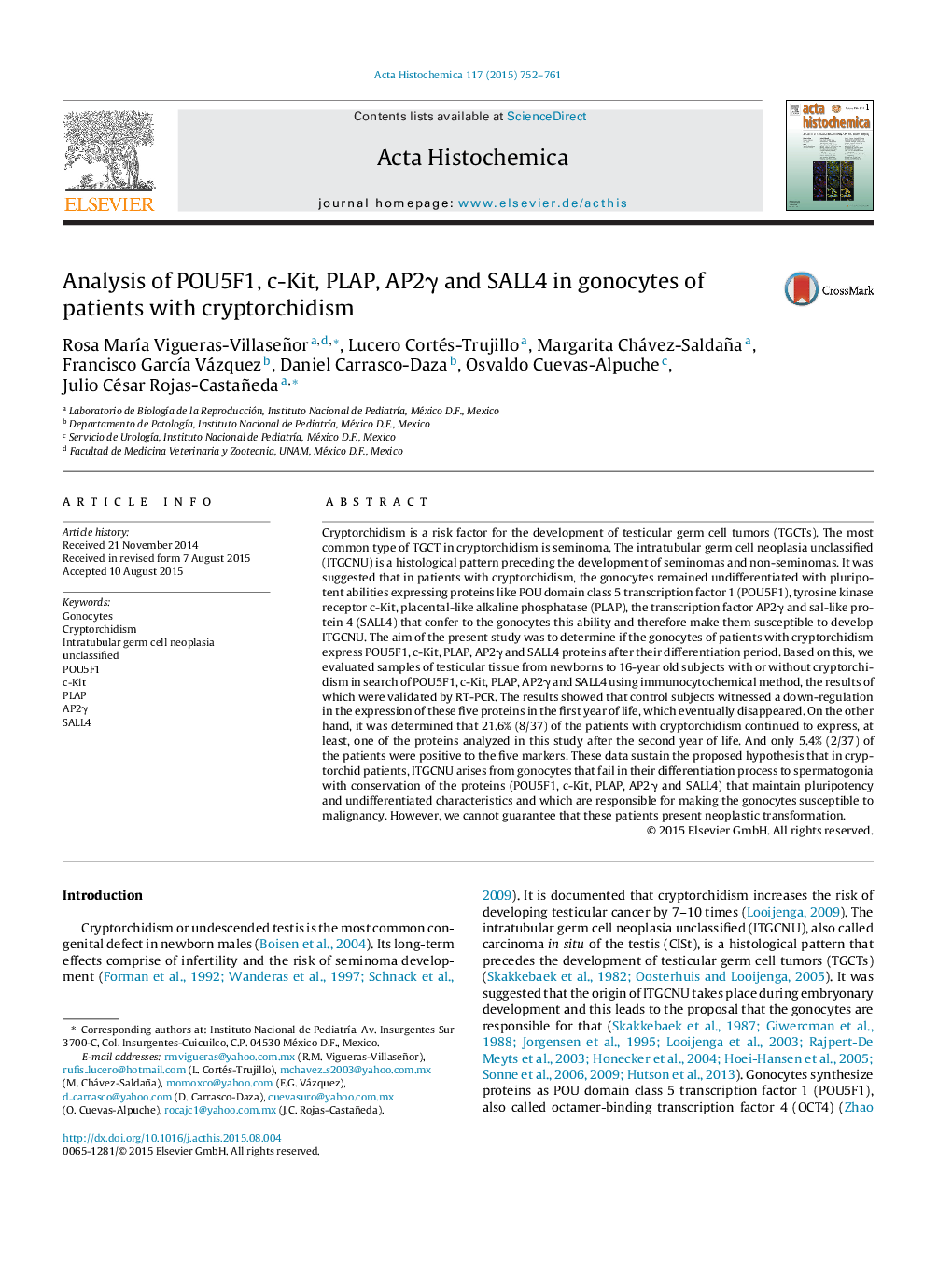| کد مقاله | کد نشریه | سال انتشار | مقاله انگلیسی | نسخه تمام متن |
|---|---|---|---|---|
| 1923400 | 1048890 | 2015 | 10 صفحه PDF | دانلود رایگان |

Cryptorchidism is a risk factor for the development of testicular germ cell tumors (TGCTs). The most common type of TGCT in cryptorchidism is seminoma. The intratubular germ cell neoplasia unclassified (ITGCNU) is a histological pattern preceding the development of seminomas and non-seminomas. It was suggested that in patients with cryptorchidism, the gonocytes remained undifferentiated with pluripotent abilities expressing proteins like POU domain class 5 transcription factor 1 (POU5F1), tyrosine kinase receptor c-Kit, placental-like alkaline phosphatase (PLAP), the transcription factor AP2γ and sal-like protein 4 (SALL4) that confer to the gonocytes this ability and therefore make them susceptible to develop ITGCNU. The aim of the present study was to determine if the gonocytes of patients with cryptorchidism express POU5F1, c-Kit, PLAP, AP2γ and SALL4 proteins after their differentiation period. Based on this, we evaluated samples of testicular tissue from newborns to 16-year old subjects with or without cryptorchidism in search of POU5F1, c-Kit, PLAP, AP2γ and SALL4 using immunocytochemical method, the results of which were validated by RT-PCR. The results showed that control subjects witnessed a down-regulation in the expression of these five proteins in the first year of life, which eventually disappeared. On the other hand, it was determined that 21.6% (8/37) of the patients with cryptorchidism continued to express, at least, one of the proteins analyzed in this study after the second year of life. And only 5.4% (2/37) of the patients were positive to the five markers. These data sustain the proposed hypothesis that in cryptorchid patients, ITGCNU arises from gonocytes that fail in their differentiation process to spermatogonia with conservation of the proteins (POU5F1, c-Kit, PLAP, AP2γ and SALL4) that maintain pluripotency and undifferentiated characteristics and which are responsible for making the gonocytes susceptible to malignancy. However, we cannot guarantee that these patients present neoplastic transformation.
Journal: Acta Histochemica - Volume 117, Issue 8, October 2015, Pages 752–761